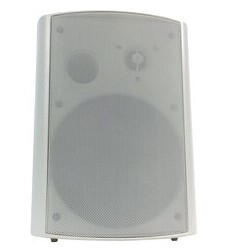A Face-lift at the School Intercom
The school intercom has actually been around for as long that it is almost an academic dinosaur. Yet the school intercom is still utilized daily for effective, reliable, and useful interaction of both routine task updates and also critical information in emergency situations. The system operations have actually undergone improved protocols throughout the years that help get rid of unintended errors.A school intercom system is also commonly known as a, or public address, system. It originally was established for instructional objectives, as well as is still utilized by schools today, however various other kinds of companies as well as establishments have adopted intercoms for their applications, potentially altering them to some degree. Because of this, communication procedures have actually been stretched to the point where a take another look at and/or upgrade of them could be ideal today.An intercoms for schools has established itself up to broadcast messages out to everyone present on the grounds (or a minimum of inside your home) no matter location, as opposed to needing attendance at a setting up. This implies that audio has to be piped into all areas (primarily class) to get to the institution population. This way, all hear the message(s) simultaneously.To make this work, speakers are placed in all spaces on campus and also a tool of transmission is installed in order to lug programs to the audio speakers synchronously. Lest classes be interrupted by the sudden appearance of noise, the audience is generally gotten ready for the notices by the playing of a bell, tone pattern, or similar noise as a preface. This tends to cause people providing greater interest to the interaction.Now, as the intercom system for colleges has actually been embraced into various other organization settings, this notifying prior to the broadcast has in some circumstances been preserved while in others it has actually fallen away. In job settings workers often tend to be focused and may simply tune out the alert with no warning that it's coming. Yet in train terminals or airport terminals, as an example, the alert is commonly omitted in that people are less busied.Use Intercoms has actually advanced also beyond the simple selection of whether or not to notify prior to announcements. Actually, for years the appearing of factory shift whistles and school bells have made up the entire message needed to be sent out! But when spoken notices have to be broadcast, extra audio or even visual (e.g., message board) kinds of interaction can help with efficient shipment.Extra kinds of communication give administrators with even more adaptability in making a decision exactly how best to provide messages as well as news. Audible methods, which tend to disturb as well as sidetrack, may not be excellent in non-emergencies or scenarios where the target market is a subset of every person within earshot. On the other hand, visual approaches can maybe be as well easily neglected or missed out on.An important factor to consider is the security of personal privacy when particular alerts are not for public intake or might be thought about offensive by some. Messages for people can and must be delivered directly, yet often individuals remain in transportation as well as broadcasting publicly is needed in order to reach those that require to hear it. We are currently utilized to listening to news of boarding times or gate modifications, for instance, that relate to only a few.Mixed media interaction is really a lot more common than before. It is usually identified that people's interaction choices differ amongst verbal, aesthetic, as well as tactile approaches. One's messages can hence reach even more people if delivery constitutes a mixture of distinct and also visual info.Intercom systems remain to be popular means to reach a mass target market, though the associated communication procedures also remain to advance as well as get updated in various environments. Taking a new look at the school intercom remains a continuous process.

© All rights reserved.